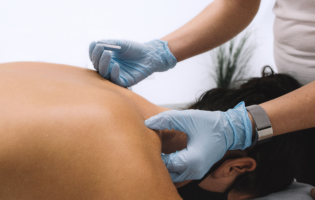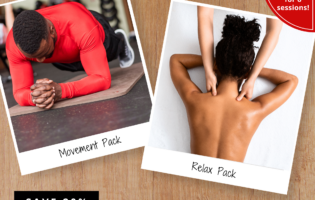Total Therapy Blog
Squatting and Knee Safety

This article was contributed by our resident kinesiologist Derek Smith, BSc.Hons(Kin). Derek is a kinesiologist with a BSc Honours Kinesiology from the University of Waterloo with an advanced diploma in Fitness and Lifestyle Management from George Brown College.
“Taking the “guess work” out of health and fitness by using an evidence-based approach is important to me. I try to empower clients to achieve the greatest results by teaching them the fundamentals of how the body works and how to develop ultimate performance. I believe that this leads to efficient training, high self-confidence and better long-term results.” -Derek Smith, BSc.Hons(Kin)

Reference Image for Article Below
Recently this has been an image circulating on Facebook challenging the common belief that the knees should remain behind the toes when performing a squat. Two studies have likely stimulated this debate, NCBI Article 1 and NCBI Article 2. These studies conclude that stopping the knees from moving over the end of the shoes causes greater forces at the hip and back and therefore we shouldn’t restrict forward knee motion. Here I’ll make the case for why the “knees behind toes” rule should still be followed.
Studies such as this one, NCBI Article 3, show that greater knee flexion in a squat causes greater stresses at the knee. The knees-over-toes squat causes greater knee flexion so let’s assume that we want to minimize this stress. Work by Stuart McGill in his books Low Back Disorders and Ultimate Back Fitness and Performance shows that stance width is crucial in performing a proper squat motion. Basically, a wider stance (greater hip abduction and external rotation) opens up the hip joint and allows for greater depth without compromising back or knee position. It is possible to assess a client’s ideal stance width by simply trying out different widths and watching the biomechanics. If you look at the illustration above (particularly the second image) you can see that the stance is too narrow and the back is overcompensating. Of course to perform a proper squat you need to hinge from the hips. This means that the hips should lead the movement, not the knees.
To summarize, the knees should remain behind the toes in a squat. If they don’t you need to look at the overall biomechanics to see where the fault lies. Is the stance too narrow for the depth of squat? Are the hips properly “hinging” or are the knees taking over the movement? Only once you rule out improper biomechanics should you consider accepting knee movement over toes. Consider though, as a practicing kinesiologist I teach the squat numerous times a week and have always been able to keep the knees within the toe limit.








Follow Us!
& Stay Up To Date
BLOG